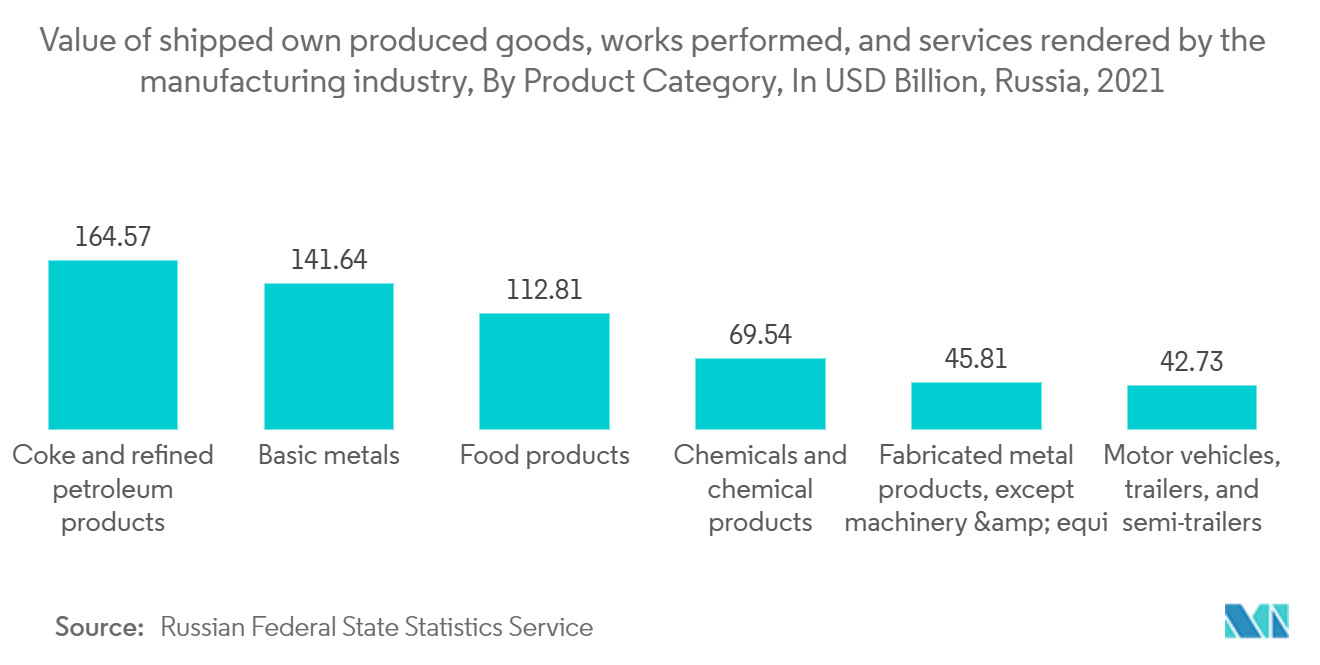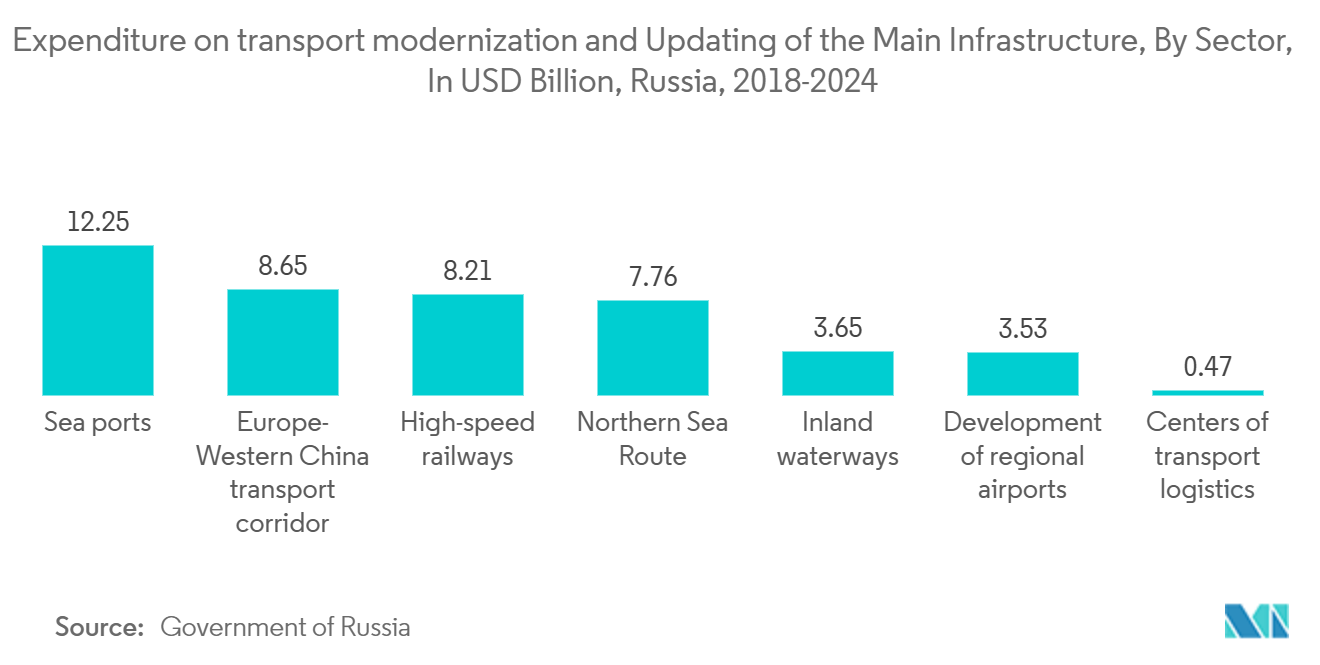Market Trends of Russia Metal Fabrication Industry
Increasing Number of Manufacturing Plants in Russia
Some of the major manufacturing sectors in Russia are Machine Manufacturing, chemicals, textile and light industry, and the Automotive sector. Though the manufacturing sector in Russia has been greatly affected as a result of the Russia-Ukraine war, many companies have a strong footprint in the Russian Manufacturing sector.
Coke and refined petroleum products had the largest production value among manufacturing segments in Russia, measured at approximately 12.5 trillion Russian rubles (USD 0.17 Trillion) in 2021. Basic metals were the second-leading category, at over 10.7 trillion Russian rubles (USD 0.14 Trillion). Russia's food production value exceeded 8.5 trillion Russian rubles (USD 0.11 Trillion), according to the Russian Federal State Statistics Service.
Some of the major pharma companies like Pfizer, Johnson & Johnson, Novartis, and Abbott are among the drugmakers that manufacture pharmaceutical drugs at facilities in St. Petersburg and elsewhere in the country and typically sell those drugs as branded generics or under Russian brands. This has accelerated the manufacturing sector and thus the substantial need for metal pieces of machinery and fabrication in the country.

Increasing Transportation Infrastructure Development Activities in Russia are boosting the Market.
Russia has announced plans for a massive infrastructure expansion program. Russia intends to invest 400 billion roubles (USD 6.8 billion) from its National Wealth Fund in the year 2022, in addition to the 535 billion roubles (USD 7.10 billion) it has previously spent to maintain financial stability.
The Russian government has set aside USD 1.78 billion for the construction of new highway links. The most significant of these projects will be the construction of the new M12 highway, which will connect Moscow with Kazan and pass through Nizhny Novgorod. Other significant projects include new sections of the M4 Don highway, a 51-kilometer bypass around Krasnodar, and a 67-kilometer bypass around Aksaya. Work on the USD 266.5 million bypass around Novorossiysk will begin in 2022 and is expected to be completed by 2023.
Furthermore, the Russian government is focusing on transportation infrastructure modernization. RUB 6.3 trillion (USD 0.084 trillion) was issued as part of a comprehensive plan to upgrade the country's highways, airports, railways, ports, and other transportation infrastructure. Furthermore, the Russian government has allocated RUB 4.8 trillion (USD 66.6 billion) to the "Safe and High-Quality Highways" project. These projects improve regional road connectivity in Russia.
However, the government intends to build 6,835 miles (11,000 kilometers) of new railroad tracks by 2030, connecting the cities of Moscow, St. Petersburg, Samara, Krasnodar, and Novosibirsk. Furthermore, the Russian railway network is seeing a surge in construction activity under the direction of the rail monopoly RZD. RZD was building 12,427 miles (20,000 km) of roads that were expected to be finished by 2030 and cost more than USD 61 billion.



